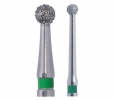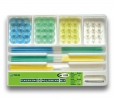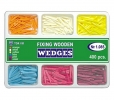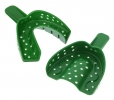PURPOSE:
In this in vitro study, six implant-abutment connection designs were compared and evaluated regarding load bearing capacities and failure modes.
MATERIALS AND METHODS:
Five implants of Astra Tech, Bego, Camlog, Friadent, Nobel Biocare, and Straumann were separately embedded in stainless steel tubes using polyurethane, for a total of 30 specimens. Specimens were statically loaded under an angle of 30° with respect to the implant axis in a universal testing machine using a test setup according to ISO 14801. Failure was indicated by a load drop of 100 N in force. Load-displacement curves were analyzed, and maximum force and force at which permanent deformation occurred were recorded. Statistical analysis was performed using one-way ANOVA with the level of significance set at 0.05.
RESULTS:
Statistical analysis revealed that the type of implant-abutment connection design has a significant influence on load bearing capacity (p < 0.001). The mean maximum forces ranged between 606 N (Straumann) and 1129 N (Bego); the forces where plastic deformation set in ranged between 368 N (Friadent) and 955 N (Bego). Failure modes differed between the various implant-abutment connection types tested.
CONCLUSIONS:
Implant-abutment connection design has a significant influence on load bearing capacity and failure mode of implants; however, all implant-abutment connection designs tested would be expected to withstand clinically relevant forces.
Source:PMID: 21910778 PubMed - indexed for MEDLINE




